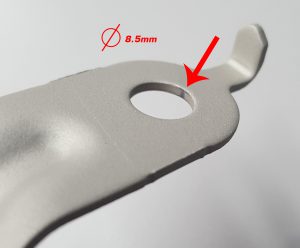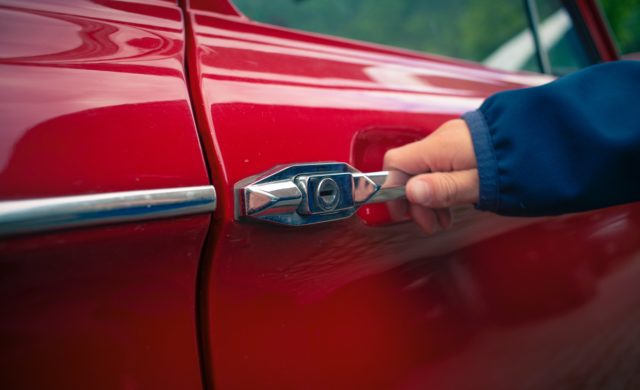One of the fears associated with a rack-spray coating process is that, due to the part being “fixtured” and resting on a hook, the part will not have complete coverage. And without complete coverage, the functionality of the coating is in jeopardy.
It is technically true that there will be a “witness mark” where the part is held on the fixture.
However, in regards to the “functionality” aspect of the coating; it depends on what the customer’s perception of “in jeopardy” is.
For example, below is how a typical witness mark on all rack-sprayed parts would look like. For reference, the hole this was racked thru is 8.5mm in diameter.

Witness mark on a rack-sprayed component
The part in the picture is coated with Magni’s flagship zinc-flake coating system Magni 565. Zinc-flake coatings are sacrificial corrosion resistant systems – they contain certain elements, such as aluminum or zinc, which oxidize sacrificially to ensure the substrate to which they are applied remains corrosion free.
Some customers fear a witness mark from a rack-spray process would lead to red-rust when parts are evaluated in a salt-spray chamber. However, zinc-flake coatings also tend to “heal” themselves – if there are small imperfections in the coating surface, the oxidation from the coating itself will prevent red-rust from ever forming. As a result, the part pictured above surpassed 1500hrs in a salt-spray chamber with zero red-rust, even with the witness mark.
In terms of other types of functional coatings, such as dry-film lubricants where corrosion resistance is not the primary goal, witness marks do not pose a serious problem.
The functional elements of dry-film lubricants, such as PTFE, FEP, graphite or molydisuflide, are soft. As a result, when a coated component comes in contact with a mating part, the coating will migrate across the surface of not only the coated component but the non-coated component as well. Because of this, the very small coating void from the witness mark is a non-issue.
Typically, there are only a few instances where a witness mark would be detrimental to the function of the coating. One would be if a barrier coating was being used for chemical corrosion resistance – these coatings are not sacrificial and coating voids would be problematic. Another would be coating on threads of a large bolt or fastener – the witness mark on these components would be much larger and coating functionality would, in fact, be impacted.
In such instances, there are steps that can be done to eliminate the witness mark, such as flipping or rotating the part on a fixture in between coats.
If you require a rack-spray process on a component, or are dealing with quality issues in your current process and need to know if a part can be coated via a spray method as opposed to dip-spin, please contact us today.
Related Articles

Reduce Plastic Sticking with Dryer Panel Coatings
DECC SOLVES PROBLEM OF PLASTIC STICKING TO DRYER PANELS

Coatings for a Quiet Ride
As cars have gotten quieter and quieter over the years, auto makers have...

Dip Spin vs. Rack Spray – Why Not Both?
When it comes to the application of liquid-based functional coatings, there are two...

